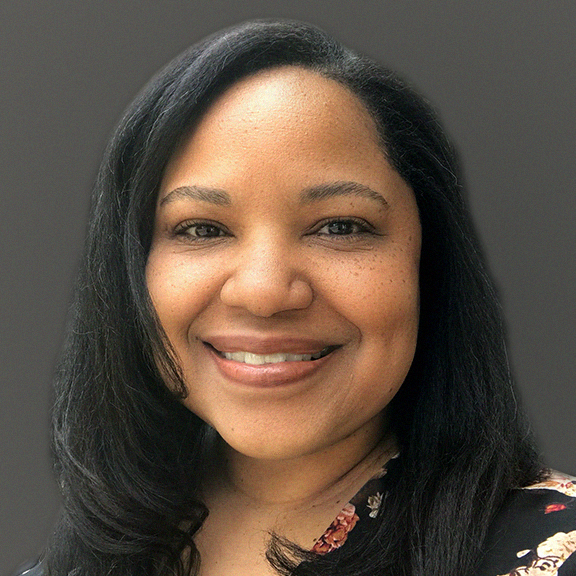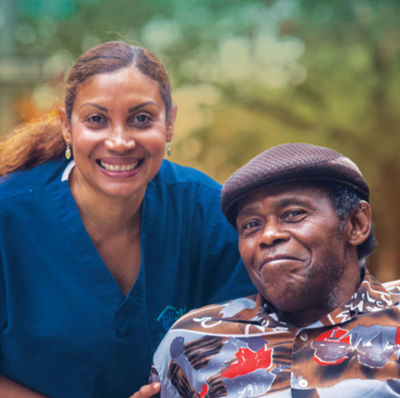Partnering to Improve Care: Implementation, Impact, and Lessons Learned
In 2024, PHI launched our Partnering to Improve Care pilot training program. Developed in partnership with Florida State University (FSU) College of Medicine, Department of Geriatrics, the program is a comprehensive online training series for family caregivers and home care workers. This article details the initiative’s implementation process, examining impact and lessons learned through a pilot program designed to empower home care workers and family caregivers.
Program Design and Implementation
The Partnering to Improve Care training pilot aimed to test a PHI training resource with up to 100 home care workers and 100 family caregivers. We designed our program using PHI’s hybrid approach to caregiver training, combining self-paced online learning with interactive, instructor-led sessions called learning labs.
As part of our work with FSU, we developed two complementary communication skills courses—anchored in PHI’s field-defining Coaching Approach® to Communication, for both family caregivers and home care workers. We carefully contextualized the content of these training programs to be relevant to each audience’s unique role and experiences in home care. For example, we created matching scenarios presenting similar situations from both perspectives—one version for family caregivers and another for home care workers.
In order to ensure that our training was accessible and engaging, and that it supported all participants to completion, we implemented:
- A mobile-friendly learning management system (LMS) that allowed participants to access materials across different devices and platforms.
- High-touch, bilingual support in English and Spanish for participants, including both email and phone support.
- Interactive learning labs combining 90 minutes of skills reinforcement with group discussions, role plays, and breakout sessions, to encourage peer learning and community building.
- A 30-minute group debrief to get in-the-moment feedback from participants, enabling PHI to ask deeper questions about their experience in the program.
- Provision of a $75 stipend for learner participation in training, and $50 for their participation in the learning labs.
Program Reach and Impact
PHI believes deeply in the power of connection and engagement as a form of learning. We used the pilot as an opportunity to test the impact of pairing asynchronous training with an instructor-led learning lab. Learning outcomes from this method demonstrate the value-add of a hybrid approach.
Overall, 186 participants—113 family caregivers and 79 home care workers—completed the Partnering to Improve Care asynchronous training. Of these participants, 21 family caregivers and 19 home care workers also participated in our instructor-led learning labs, which provided opportunities to interact with the PHI trainers and practice the skills they learned in their respective asynchronous courses.
We collected both quantitative and qualitative data to assess the program, including:
- Knowledge assessments administered before and after the asynchronous training.
- Training effectiveness surveys, conducted after both the asynchronous course and the learning labs, which assessed participants’ satisfaction, intent to use the training, and other factors.
- Debrief conversations at the end of the learning lab sessions, to better understand participant experience and surface suggestions to make them better for home care workers and family caregivers.
- Post-training focus groups held with a select number of participants to gauge their overall satisfaction with the training program, the learning experience, and PHI’s support for trainees.
Asynchronous Training Outcomes
Our assessment data showed significant positive outcomes:
- Family caregivers showed a 25% improvement in knowledge based on pre- and post-assessment results.
- Home care workers showed improvements of up to 22% across the three training modules included in their version of the training.
- Satisfaction levels were exceptionally high, with 94% of family caregivers and 91% of home care workers reporting they were satisfied or strongly satisfied with the training.
- 91% of home care workers and 96% of family caregivers indicated their intentions to apply their learning in their caregiving roles.
The Learning Lab Difference
During the learning lab debriefs and focus groups, PHI had the opportunity to speak directly with participants. Key findings from both home care workers and family caregivers included:
- Participants indicated they would strongly encourage others to take the Partnering to Improve Care
- Participants felt the training was relevant, highly informative, and engaging, and that the content was easy to understand. They appreciated working through relatable scenarios and activities.
- Participants felt strongly that the communication skills taught in the course were valuable. They indicated that they were not usually taught communication skills in other contexts.
- Both home care workers and family caregivers expressed a significant desire to connect with others in similar roles, and shared that they enjoyed learning strategies from peers with more experience.
- Participants felt that taking part in the learning lab helped them to feel more confident with their new skills. After hearing how their peers handled specific situations, they were confident in handling them in similar ways.
In addition to sharing feedback via training effectiveness surveys, debriefs, and focus groups, some participants also shared unsolicited feedback via email with the PHI training team. Participants shared they felt the training was highly motivating and engaging, and that—because of the design and format of the training—it was the most knowledge and skill-building they have absorbed from a self-paced program.
Lessons Learned and Recommendations
PHI’s experience with the launch of the hybrid Partnering to Improve Care pilot offered critical insights that will not only enhance our capacity to deliver engaging, high-quality online learning opportunities for home care workers and family caregivers but also serve as valuable guidance for other organizations and individuals pursuing similar goals. Outlined below are key learnings that PHI will build on as our work progresses:
- Hybrid Learning Enhances Engagement. The combination of asynchronous content and instructor-led learning lab sessions proved highly effective with this group of participants. This approach offered flexibility while maintaining the benefits of peer interaction and direct instructor feedback. Both family caregivers and home care workers valued the opportunity to connect with peers during learning labs.
- Mobile-First Design is Essential. While our mobile-friendly approach worked well, participant feedback revealed the need for a more comprehensive mobile-first design strategy. This is crucial for caregivers who primarily access content via their smartphones.
- High-Touch Support Drives Success. Our program achieved an 89% completion rate, largely due to our high-touch, relationship-building support process. Regular check-ins and responsive assistance helped participants overcome technical barriers and stay engaged throughout the training.
- Participant Stipends Matter. The participant stipends likely helped with engagement and completion rates while also, importantly, acknowledging the valuable time commitment of both home care workers and family caregivers.
- Community Building is Crucial. Offering structured opportunities for participant interaction through learning labs and focus groups helped create a supportive learning environment. Participants consistently expressed interest in ongoing training opportunities, highlighting an area of unmet need in the caregiving community.
Looking Ahead
The success of this program demonstrates the potential of well-designed hybrid learning approaches in direct care education. Online training initiatives should prioritize mobile-first design, maintain high-touch, relationship-building support systems, and create opportunities for participant connection and community building.
For organizations looking to implement similar programs, we recommend focusing on creating sustainable learning communities that thoughtfully integrate technology and human connection. Our experience shows that effective direct care education goes beyond simply delivering training content—it requires building an “ecosystem” that supports ongoing learning and peer support.
The strong participant engagement and positive outcomes from this program highlight the significant demand for high-quality, accessible direct care training. As we continue to develop and refine our approaches, PHI remains committed to supporting both home care workers and family caregivers in their vital roles.
Participant Testimonials
Participants powerfully reflected the impact of our pilot program in their own words:
“A lot of other trainings only apply to the work place. But this is not something you’re only going to use 9 to 5 Monday through Friday.”
“I really liked how the course emphasized self-care.”
“I found your course was easy to register for and you as administrators were very responsive. Once I registered, I had an email that told me where to go. Everything was well outlined and very simple.”
One participant reflected on “the very caring, insightful and intentional way” the trainings were assembled.
Another identified a wish for more training resources of this kind, “because it just allows us caregivers to be more self aware of how we manage the care of our clients, and ensure that at the end of each shift, they have been well cared for.”
In order to capture further the impact of our pilot program, we have also conducted an extensive interview with two participants–read it here.
If you are interested in bringing Partnering to Improve Care training to your organization, or finding out how you can access it to support your own caregiving efforts, please fill out the contact form below and a representative of PHI’s Workforce Innovations Team will be in contact soon!






